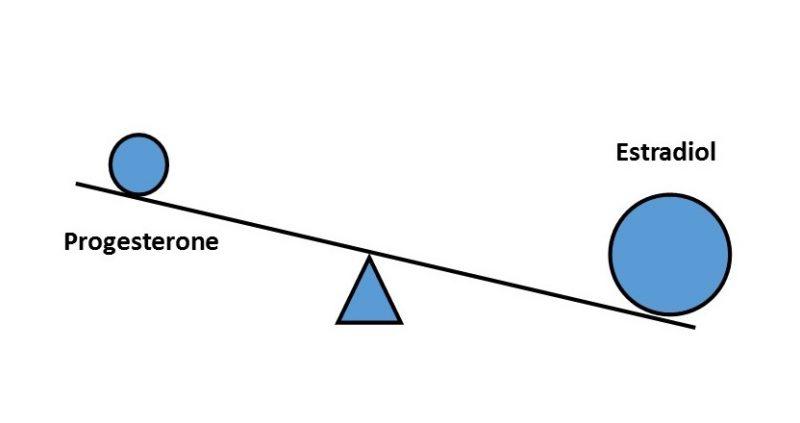
Estrogen dominance has become so prominent in our hormone consultations with women. It is most likely the number one problem I have encountered with all the consultations I have done (with adrenal dysfunction being second). What is estrogen dominance? What causes it? How is it treated?
First, we must make clear, estrogen dominance is not correlated to estrogen levels only. Women can experience estrogen dominance with normal levels of estrogen. The term “dominance” explains the relationship between estrogen and progesterone. It could be termed as progesterone deficiency rather than estrogen dominance. The term estrogen dominance really means progesterone is too low relative to estrogen levels. I would say about 90% of the women I have counseled on their hormones demonstrate this scenario. Most menopausal women will have low to very low progesterone levels with low to normal estrogen levels.
Women can experience night sweats and hot flashes even when their estrogen levels are normal. Estrogen dominance can cause night sweats and hot flashes as well. I have seen too often where a practitioner will increase estrogen therapy to stop these symptoms without testing hormone levels. You can probably imagine the outcome. The female wonders why the hot flashes have not improved or why they have gotten worse.
Estrogen and progesterone are produced by the female sex organs; however, estrogen can still be produced in adipose tissue. This can contribute to normal levels of estrogen during pre-menopause and early to mid-stage menopause. However, progesterone is produced by the placenta during pregnancy, which sends the progesterone levels to the stratosphere relative to non-pregnancy. Progesterone is also produced from the remnant of the corpus luteum post ovulation.
Hormone therapy is not just for women experiencing menopause. Defects in the luteal phase result in reduced progesterone production and this can be seen in women in their mid-thirties. Women can experience anovulatory cycles, which is when ovulation does not occur causing no corpus luteum. This will result in low production of progesterone. If there is no ovulation, there is no corpus luteum, then there is no progesterone. You may have estrogen dominance, no matter the age, if you are experiencing any of the following symptoms:
Symptoms of Estrogen Dominance
• Mood swings • Fatigue
• Irritability • Diffuse aches & pain
• Depression • Weight gain: hips, thighs & abdomen
• Irregular periods • Sleep disturbance (insomnia, less REM sleep)
• Increased facial hair • Breast tenderness/Fibrocystic breasts
• Hot flashes • Bone mineral loss (Osteoporosis)
• Vaginal dryness • Short-term memory loss
• Water retention • Lack of concentration
• Uterine fibroids • Dry, thin, wrinkly skin
• Decreased libido • Thinning of scalp hair
• Headaches • Heavy menstrual bleeding
Estrogen dominance is measured through hormone testing by serum or saliva. Estrogen dominance is reflected in a ratio of Progesterone to Estradiol (Pg/E2). If progesterone is too low relative to estradiol, the ratio will be low indicating estrogen dominance.
We recommend balancing hormone levels with bio-identical hormones, in which the chemical structure is identical to the chemical structure of the hormones in your body. The body tends to react differently to compounds entering the body that are not bio-identical.
C. Craig Wells, RPh